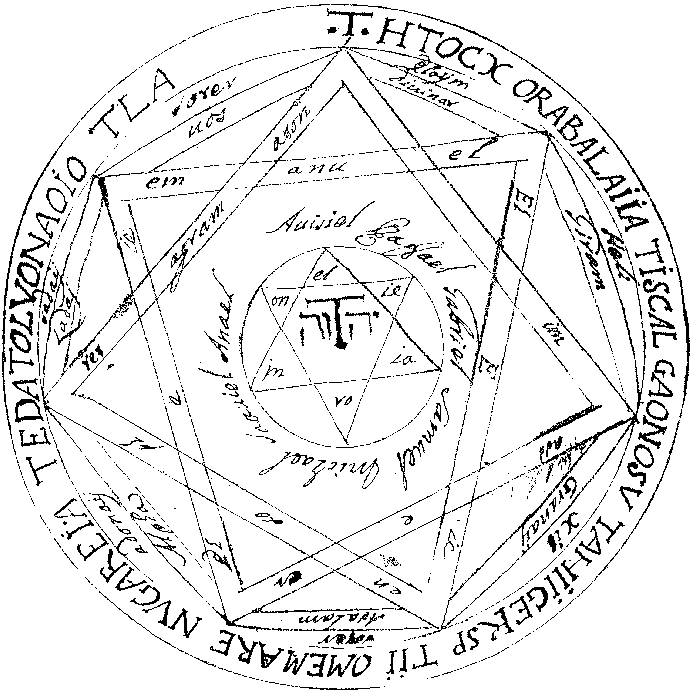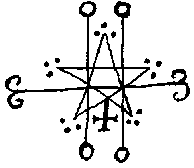You know what I hate? When I can tell that something in what I’m reading (or seeing) is a reference to something, and I don’t know what that something is. Sometimes it’s an inside joke, but more often it’s a literary reference, or an allusion to some knowledge I don’t have. Most of the time I can spot the reference, even if I don’t know what it refers to, and it drives me insane.
This, incidentally, is why I first read the Bible cover-to-cover, and then did so again in some other translations, even given my obvious positions on religion–it’s the mother lode for allusions and references in Western culture. It’s also why I’ve read several translations of Homer, and a whole pile of other classical stuff. It’s why I made the complete Shakespeare a project one year, and why I keep threatening to take on Gibbon. And many other things.
This has also lead me to research a lot of fairly esoteric things, in order to understand references and allusions in various works. It’s why I know about the history of Madame Blavatsky, or about Eugen Sandow, or about Hedy Lamar’s work in spread-spectrum communications. It’s why I know a bit about the Hermetic Order of the Golden Dawn, and I can read some ogham script, and I can recognize the vévé of Papa Legba when I see it, and so on.
There are also clouds of things I have a sense that I should know about, but I’ve never hit the right introduction point to, or that I’ve never identified beyond a vague sense of “there’s something over there I should know about”-ness. Many of these are historical, or literary, and many are also bits of occult esoterica.
This week, while listening to the Wormwood podcast, I ran into another one. Specifically, I ran into references to the “Lesser Key of Solomon”, something of which I was essentially ignorant. I’ve read all kinds of references to Solomon binding demons and djinni; I must have read at least 100 stories or novels that referred to Solomon and his bindings in some way. I’ve read things that referred to the diagrammatic/mathematical nature of Solomon’s workings, and how he did “magic” that was powered by God, but I’ve never done any real looking into it. Well, this week, armed with that particular phrase, “The Lesser Key Of Solomon”, I could do a little followup and find out a bunch of the references and allusions I’ve been missing. Ironically, the Lesser Key of Solomon doesn’t really have anything to do with Solomon, but it’s interesting and leads to other weird, interesting stuff. Yes, this is the kind of thing I do when I get a free moment; draw your own conclusions.
Well, one good search phrase is all it takes to get the basic scoop in the world of Google.
And that’s how I found myself reading about the Clavicula Salomonis:
The Lesser Key of Solomon or Clavicula Salomonis is an anonymous 17th century grimoire, and one of the most popular books of demonology. It has also long been widely known as the Lemegeton.
It appeared in the 17th century, but much was taken from texts of the 16th century, including the Pseudomonarchia Daemonum, by Johann Weyer, and late-medieval grimoires. It is likely that books by Jewish kabbalists and Muslim mystics were also inspirations. Some of the material in the first section, concerning the summoning of demons, dates to the 14th century or earlier.
The book claims that it was originally written by King Solomon, although this is certainly incorrect. The titles of nobility assigned to the demons were unknown in his time, as were the prayers to Jesus and the Christian Trinity included in the text.
All very interesting, and it in turn points to the Clavis Salomonis, or the not-so-Lesser Key of Solomon.
Judging by its style of writing, the book was written in the Middle Ages, and ¨there is no ground for attributing the Key of Solomon, in its present form, a higher antiquity than the fourteenth or fifteenth century. Many books attributed to King Solomon were written in this period, which was underscored by the Crusades and the influence that the contact with Jewish kabbalists and Arab alchemists had on European magicians and demonologists.
Unlike other similar books, the Key of Solomon does not mention any of the seventy-two spirits constrained by King Solomon in a bronze vessel as the Pseudomonarchia Daemonum (16th century) and the 17th century Lemegeton seal of the demons do. What the Key of Solomon describes is not the appearance or work of any demon but only the necessary drawings to prepare each experiment.
The book contains several paragraphs and terms inspired by Talmudic texts and the Jewish Kabbalah teaching.
According to the mythical history of the document, as recorded in its introduction, Solomon wrote the book for his son Roboam, and commanded him to hide the book in his sepulchre upon his death. After many years the book was discovered by a group of Babylonian philosophers repairing Solomon’s tomb. None could interpret the text, until one of them, Iohé Grevis, suggested that they should entreat the Lord for understanding. The Angel of the Lord appeared to him and extracted a promise that he would keep the text hidden from the unworthy and the wicked, after which he was able to read it plainly. Iohé Grevis then placed a conjuration on the book that the unworthy, the unwise or those who did not fear God would not attain the desired effect from any of the workings contained therein.
Fascinating.
The Wikipedia pages linked above have a couple of fascinating illustrations from the books, like this one:

Obviously, I wanted to read more. And, I decided I should probably have a copy of these books in my library. You know, just in case.
Well, finding modern annotated translations isn’t a big problem: again, a bit more work with Google suggests that for the Key, the best modern edition is the Mathers one (although Mathers appears to have omitted several sections of the source?), and the best edition of the Lesser Key is the Peterson one. (And that in turn leads me to do more reading on Peterson, who seems to have done some interesting stuff. I think I’d also like to see his editions of the Grimorium Vermum and John Dee’s Five Books of Mystery–John Dee being another one of those guys for whom I know the “100 words” story, but who pops up often enough that I know I’m missing a lot of things.)
These things aren’t cheap, though, and I won’t be buying them anytime soon.
However, this is the age of the Internet, so I don’t have to get the physical copies in order to read the books. There are several different editions of each Key, as well as many other weird works, at the Archives of Western Esoterica. The quality of the accompanying graphics vary, though. As an alternative you could download PDFs of the Key and the Lesser Key from the chaosmatrix archives.
And, just to wrap up this post, let’s include a little sample from the Key of Solomon:
CHAPTER X: OF THE EXPERIMENT OF INVISIBILITY, AND HOW IT SHOULD BE PERFORMED
If thou wishest to perform the experiment of invisibility, thou shalt follow the instructions for the same. If it be necessary to observe the day and the hour, thou shalt do as is said in their chapters. But if thou needest not observe the day and the hour as marked in the chapter thereon, thou shalt do as taught in the chapter which precedeth it. If in the course of the experiment it be necessary to write anything, it should be done as is described in the chapters pertaining thereto, with the proper pen, paper, and ink, or blood. But if the matter is to be accomplished by invocation, before thy conjurations, thou shalt say devoutly in thine heart:—
SABOLES, HABARON, ELOHI, ELIMIGIT, GABELOY SEMITION, METINOLACH, LABALITENA, NEROMOBEL, CALEMERE, DALUTI, TIMAGUEL, VILLAGUEL, TEVEMIS, SERIE, JERETE, BARUCHABA, ATHONAVEL, BARACABA, ERATICUM;1 through him by whom ye have empire and power over men, ye must accomplish this work so that I may go and remain invisible.
And if it be necessary in this operation to trace a circle, thou shalt do as is ordained in the chapter concerning circles; and if it be necessary to write characters, etc., thou shalt follow the instructions given in the respective chapters.
This operation being thus prepared, if there be an especial conjuration to perform, thou shalt repeat it in the proper manner; if not, thou shalt say the general conjuration, at the end of which thou shalt add the following words:—
O thou ALNIRAS, master of invisibility, with thy ministers CHEROS, MAYTON, METAGIR, EBIROS, DIONEDIS, UGEMENOS, ABADEM, PERIBERIM, TRANGIALEM, TRANSIDEM, SUCCANTOS, ABELOY, BORED, BELAMIA, CASTORMY, DETEL; I conjure ye by him who maketh Earth and Heaven to tremble, who is seated upon the throne of his majesty, that this operation may be perfectly accomplished according to my will, so that at whatsoever time it may please me, I may be able to be invisible.
I conjure thee anew, O ALNIRAS, Chief of Invisibility, both thee and thy ministers, by him through whom all things have their being, and by SATURIEL, ARCHIEL, DANIEL, BELLIE, ASIMONE, that thou immediately comest thither with all thy ministers, and achievest this operation, as thou knowest it ought to be accomplished, and that by the same operation thou render me invisible, so that none may be able to see me.
In order then to accomplish this aforesaid operation, thou must prepare all things necessary with requisite care and diligence, and put them in practice with all the general and particular ceremonies laid down for these experiments; and with all the conditions contained in our first and second books. Thou shalt also in the same operations duly repeat the appropriate conjurations, with all the solemnities marked in the respective chapters. Thus shalt thou accomplish the experiment surely and without hindrance, and thus shalt thou find it true.
But, on the contrary, if thou lettest any of these things escape thee, or if thou despiseth them, never shalt thou be able to arrive at thy proposed end; as, for example, we enter not easily into a fenced city over its walls but through its gates.
And maybe a little something from the Lesser Key as well:
The 29th spirit in order is Named Astaroth, he is a Mighty & strong duke, & appeareth in [the] forme of an unbeautifull angel, ridding on an Infernall like dragon, and carring in his right hand a viper (you must not lett him come to neare yu least he doe yu damage by his stinking Breath. Therefore ye Exorcist must hold ye Magicall Ring nere to his face and yt will defend him he giveth true answares of things present past & to come & can discover all secreets; he will declare willingly how ye spirits fell, if desired, & ye reason of his own fall. He can make men wounderfull knowing in all Liberall siences; he ruleth 40 Legions of spirits, his seal is as this [shown], wch weare as a Lamen before yu, or else he will not obey you.



4 comments for “Missing The Joke: Or How I Learned To Bind The Spirits”